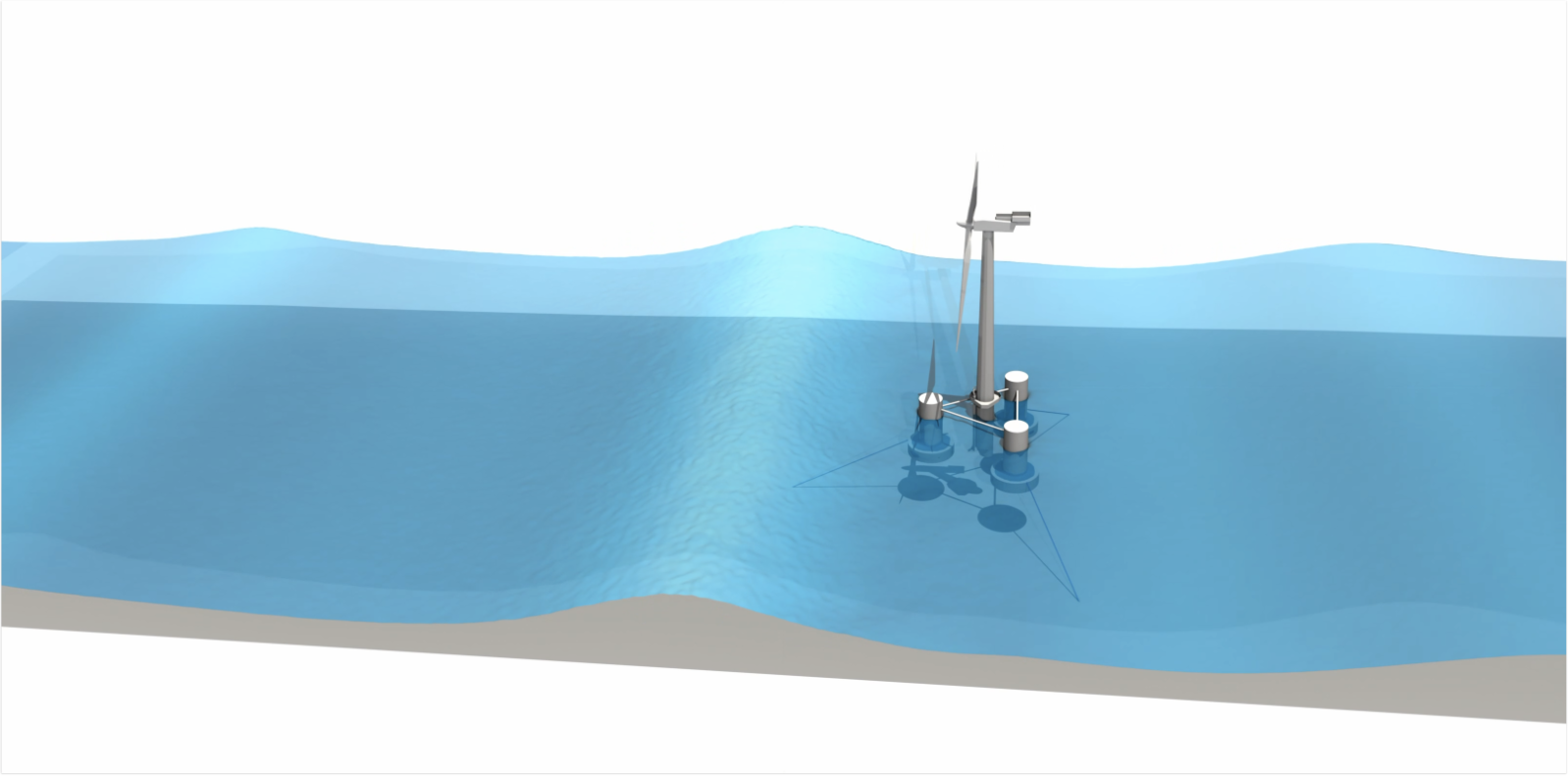Riding the storm
Simulating extreme oceanic conditions for floating wind turbines
The energy supply is, together with the climate change, the biggest problem of the mankind in the XXI century. To deal with it, it is essential to develop the clean energy sources, and reduce to the minimum, or even eliminate, the use of fossil fuels. At the forefront of these ongoing efforts to balance the energy mix, engineers are exploring the harvesting of wind energy to locations further offshore.
In a collaborative effort, researchers from five universities, led by a team at Queen's University Belfast (QUB), are investigating the structural safety of wind turbines installed atop floating platforms [1]. Their mission: ensure their safe floatation under harsh seas of present and future climate conditions.
Armed with cutting-edge numerical simulation models, combined to the computational power of the NI-HPC center GPU-accelerated computing (that is, Kelvin2), the team has investigated the resilience of a wind turbine platform, worldwide known as DeepCwind. For the scope of this research, software development has played an essential role, providing a very flexible and efficient framework to replicate the violent nature of extreme waves—potentially catastrophic to the platform and its anchoring system. To solve this issue, the researchers adopted for the first time a computational model based on the Smoothed Particle Hydrodynamics method, and implemented in DualSPHysics [2], to anticipate the response of DeepCwind. Such model excels when violent fluid dynamics need to be captured.
According to the results of this research, to enhance the design of floating wind technology, particularly during storms, the engineering of floating platforms should consider the complete evolution of the event for more reliable load estimations. As we look to expand our harnessing of wind energy, it seems we must ride the storm of procedural innovation and adaptation.

Video here.
For further information
Bonaventura Tagliafierro: btagliafierro@gmail.com
Madjid Karimirad: madjid.karimirad@qub.ac.uk
Linked publications
- Tagliafierro, B., Karimirad, M., Altomare, C., Göteman, M., Martínez-Estévez, I., Capasso, S., Domínguez, J. M., Viccione, G., Gómez-Gesteira, M., & Crespo, A. J. C. (2023). Numerical validations and investigation of a semi-submersible floating offshore wind turbine platform interacting with ocean waves using an SPH framework. Applied Ocean Research, 141, 103757. https://doi.org/10.1016/j.apor.2023.103757
- Domínguez, J.M., Fourtakas, G., Altomare, C. et al. (2022). DualSPHysics: from fluid dynamics to multiphysics problems. Part. Mech. 9, 867–895. https://doi.org/10.1007/s40571-021-00404-2
- Tagliafierro, B., Karimirad, M., Capasso, S., Göteman, M.,Martínez-Estévez, I., Domínguez, J. M., Altomare, C., Viccione, G., Crespo, A. J., and Negrut, D. (2023). “Coupled Numerical Simulation of Floating Offshore Wind Turbine Platforms: Investigating the Effects of Wave and Wind Loading Using a High-Fidelity SPH-Based Model.” In: Proceedings of the ASME 2023 IOWTC. The Exeter University, Exeter, United Kingdom
- Tagliafierro, B., Capasso, S., Martínez-Estévez, I., Göteman, M., Bernhoff, H., Karimirad, M., Domínguez, J., Altomare, C., Viccione, G., Crespo, A., and Gómez-Gesteira, M. (2023). “Hydrodynamic Validation of a Semi-Submersible Floating Platform Supporting a 15MW Wind Turbine Tower Under Extreme Loading Scenarios with DualSPHysics and MoorDyn+.” In: Proceedings of the 33rd (2023) ISOPE. Ottawa, Canada.
- Tagliafierro B., Martínez-Estévez I., Capasso S., Karimirad M., Domínguez J.M., Crespo A.J.C., Gómez-Gesteira M., Viccione G. Recent development in the simulation of renewable energy devices with DualSPHysics, IDRA2022 (38th Convegno Nazionale di Idraulica e Costruzioni Idrauliche), September 2022, Reggio Calabria, Italy.
